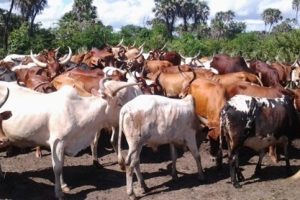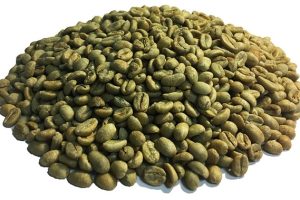Ethiopia possessed abundant natural sources. In addition, it is endowed with man-made cultural assets being home for thirteen months of sunshine, its climate is also welcoming for all species of life but paradoxically staggering with century’s old poverty and different socioeconomic challenges.
Economic growth could be reported from different perspectives of different interests groups but the nation still looks for committed actors who can exploit its wealth for the benefits of the public. Meanwhile there are signs of commitment from the government which proved some of the things that seem to be impossible for years have changed. One of them is the realization of wheat production on summer irrigation that boosts the nation’s aspiration for ensuring food security.
The irrigation based summer production has enabled the country to harvest 25 million quintals of wheat on 405,000 hectares of land until October 2022. This inspires to exert more efforts to halt the importation of wheat.
The nation also has untapped livestock resources which puts it on sixth position in the world but still couldn’t reach the expected level of meat and milk production. According to the Ministry of Agriculture, the increasing urbanization and population growth that results 6.7 kg meat per capita consumption indicates that, the meet demand is growing from time to time.
Meanwhile the national red meat strategy has been introduced for the increment of production and productivity of red meat for export market. CEO of livestock and fisheries development at Ministry of Agriculture Tsigereda Fikadu said that four years development campaign known as “Yelemat Tirufat” that focuses on nutrition indicates that the government pays due attention for the wellbeing of citizens.
It was also indicated that red meat has become one of the priorities on the ten year plan of Ministry of Agriculture.
The plan intends to produce 1.7 million tons of red meat at the end of this fiscal year and it is expected to engage youths and women on the value chain from production up to supplying to consumers.
On the other hand, several border crossing rivers are originated from Ethiopia and these water sources can be backbones of the economy through cultivating fishery and irrigation farm. Ethiopia’s water potential is expected to produce average of 100,000 tons of fish per annum, according to researches.
Over the past fiscal year, the country has planned to produce about 79,000 tons of fish and was able to achieve over 73,000 tons. In order to boost productivity, the ministry has given practical training for regional experts.
As to Tsigereda, it is possible to increase fish production using every dam constructed for irrigation farm purpose. It can also utilize hydroelectric power dams for fishery.
Prime Minister Abiy Ahmed (PhD) said that, endowed with a suitable environment for cultivation, virtually any type of fruit can be farmed in Ethiopia. Enhancing current productivity on existing fruit types and diversifying to other varieties is possible, he stated.
Launching “Yelemat Tirufat” development campaign which focuses on nutritional opulence recently, Prime Minister Abiy Ahmed (PhD) said that, the campaign is aimed at ensuring nutrition. The traditional food container, “Lemat” connects farmers, pastoralists, and consumers. It is about getting adequate nutritional food. Food self-sufficiency is directly related to national sovereignty and dignity, and “Yelemat Tirufat” campaign accelerates the efforts to achieve food self-sufficiency at the family and national levels.
Head of Fishery Desk at Ministry of Agriculture, Dr. Fasil Dawit for his part said that, in order to tackle the problems on fishery sector, it is necessary to prepare a bilateral legal framework with neighboring countries and bring some illegal actors to justice.
In this case it was indicated that the sector could be a practical testing ground to achieve the major goals of the four years national campaign of “Yelemat Tirufat”. To that end, the Ministry is working to increase fishery production from 73,000 tons which was achieved by 2021 to 247,000 tons by 2029.
Preventing illegal fishing nets, locking down lakes during breeding seasons and preventing illegal fish traffickers are mentioned to be major mechanism to protect water bodies from over fishing and vector borne diseases.
Horticulture is still in its infancy level but if it is boosted it can create job opportunity to hundreds of thousands unemployed youth and meet the demand in the urban markets. The country has planned to utilize over one million hectares of land and harvest 160 million quintals of yield in the current production year.
Horticulture Development Managing Chief Executive at the Ministry of Agriculture, Abdella Negash says that due attention is given in order to go boldly to tap the resources and to cultivate both by small holder and commercial farmers in the central high land parts of the country.
Moreover, it is essential to focus on products like onions, tomatoes, which have significant role in mitigating inflation and to protect the lower segment of the society from the growing price hike. The Consumers Cooperative Associations established in the urban areas also can supply products to consumers by fair price so that stabilizing the market can be realized.
Efforts are also being exerted in terms of breeding special seeds originated domestically or from abroad. According to the United Nations program countries are required to meet nutrition security by 2030. Thus Ethiopia has to work hard on horticulture sector to replicate what it achieved on wheat irrigation development said Abdella.
Even though the above mentioned focus areas on agricultural and livestock sectors have great potential in exploiting Ethiopia’s wealth there are several untapped areas that the nation’s economic growth could depend on. Challenges such as the outbreak of COVID-19 pandemic, internal conflict, in the northern part of the country, Russia and Ukraine war, and drought are factors among others that put hurdles on the nation’s economic growth.
The commitment that has been witnessed on the summer wheat irrigation farm can indicate that if the ongoing efforts are continued with no interruption, attaining food self-sufficiency will not be a dream rather it will be a real.
Initiatives like the “Yelemat Tirufat” are expected to play leading role in achieving higher production and productivity as well as securing nutrition. Ensuring nutrition will mean creating a productive future generation.
Ethiopia has 18 types of agro-ecological zones starting from arid areas up to the alpine forests which can be utilized both for sedentary farm and livestock production. But due to lack of technology, modern inputs, capital and skilled labor their contribution to the economic growth is insignificant.
The government long ago has been trying its level best to raise production and productivity of the sectors. It provided agricultural inputs to farmers by subsidizing price and supported them by providing extension services but as they are subsistence and the achieved results did not changed farmer’s way of living from subsistence to that of surplus producers. Hence enhancing paying attention of the sector should be continued.
Ethiopia is the second most populous country in Africa next to Nigeria. The population growth is the highest in the continent which is 3 percent. However the growth of agricultural production does not go in line with the population growth. There is huge gap between food demand and supply. The food production is below the demand as the result, to fill the gap the government mostly resorted to the importation of food which costs the nation meager hard currency reserves.
Not only these, the agricultural sector both the sedentary and the animal husbandry are vulnerable to extreme weather conditions. In time of drought crop failure is a common phenomenon which leaves farmers to sustain their life by foreign handouts. The absence of rain particularly in the low land part of the country put heavy toll on the live stalk resources. Hence to bring viable solution to the sector enhancing the utilization of technology by allocating huge budget should be taken as a way out.
BY HENOK TIBEBU
The Ethiopian Herald November 27/2022





